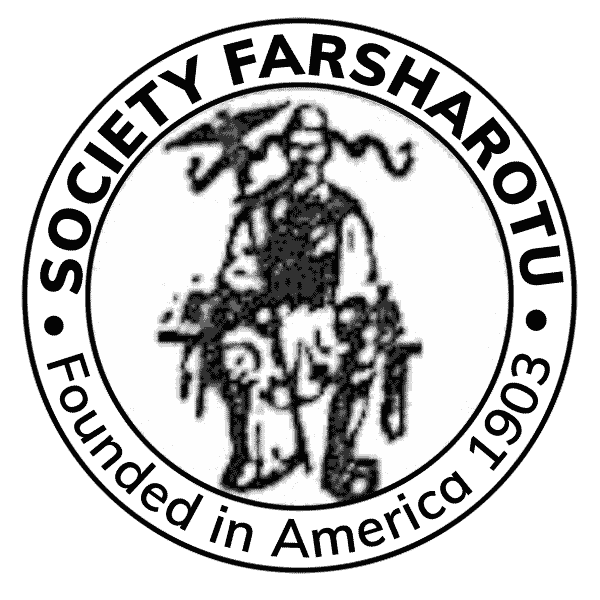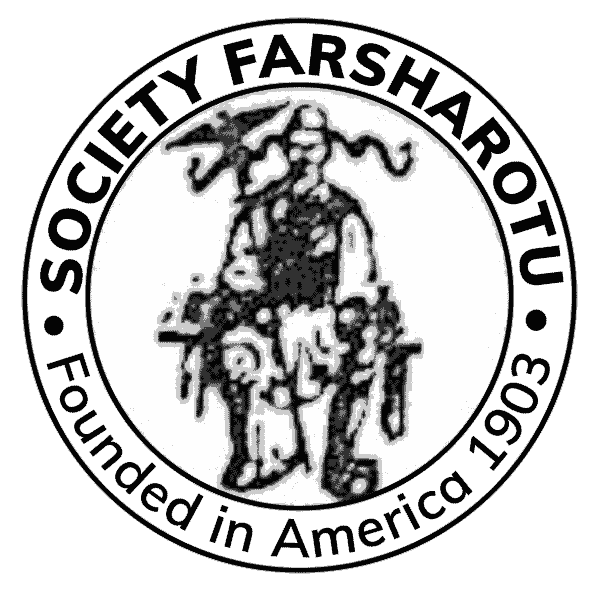Did You Know What Other People Have to Say about Us?
“After a long circuitous ascent just before the Katara Pass (`the Damned’), the only motor-crossing of central Pindos, Metsovo appears to the southeast. It is a singular Greek village, justly famed for its stunning location, its popular architecture and handicrafts, and its inhabitants, who still dress in their traditional clothes. Many of the Metsovites are Kutsovlachs — nomads who speak a Rumanian dialect. Some say they came from Walachia during the Middle Ages, and others that they were Greeks trained as mountain pass guards whose Latin language evolved into the present patois. As with the other minority languages of Greece (Macedonian, Albanian, Turk, Sarakatsani) the Vlach language and culture is a fading one. Metsovo is perhaps its last great bastion.”
—Insight Guide to Greece (Singapore, 1988)
“The Vlach Tsintsars…[were] pushed into upland areas by the South Slavs and their medieval empires. As those empires crumbled before the Ottoman advance, some Vlachs still clung to stock-herding. Others…settled permanently in lowland towns. The largest of these towns by far was Moskopol. Its population had grown past 40,000 by the mid-eighteenth century. Its merchants sent agents as far away as Venice and Vienna. Then disaster struck. Albanian mercenaries…sacked the town in 1769 and returned again in 1788. Later the famous Albanian ayan, Ali Pasha of Ioannina, finished the job of reducing the town to a pastoral village.
The merchants of Moskopol first moved their operations to Macedonian towns like Veles and Bitola. Many were drawn northward from there. Perhaps 6,000 stopped in Belgrade and other Serbian towns. A larger number continued to follow in the footsteps of Greek merchants north to the Habsburg border town of Zemun, just across the Sava River from Belgrade. They found a few of their fellows already there, sharing the grain and tobacco trade with Greeks. The new arrivals built on this foundation, supported in turn by the special privileges that Habsburg authorities had granted Tsintsar merchants since 1658. They soon dominated trade and especially money exchange and lending in Zemun. With their connections deep in the Ottoman Balkans, the Tsintsars thus provided part of the entrepreneurial impetus for shifting Balkan foreign trade from the Mediterranean toward Central Europe.
–John Lampe & Marvin Jackson, Balkan Economic History, 1550-1950 (Bloomington, 1982)
“In addition to Greece, Bulgaria, and Serbia, Romania also put forward claims to Macedonia. In this heterogeneous population there were a large number of Vlachs who were mainly traders and shepherds. Related to the Romanians, their exact numbers are not known. Despite the weakness of the relationship, by 1900 the Romanian government was subsidizing Vlach schools and by 1912 it is estimated that one million francs had been spent on this purpose. In 1905 the Sultan was persuaded to recognize a Vlach millet separate from the ecumenical patriarch. The Romanian intentions were clear; the state could make no realistic claims to Macedonia or hope to annex any land there. The chief purpose was to block Bulgaria… It was also hoped that Romanian claims in Macedonia could be used as a bargaining point to gain additional territory in Dobrudja.”
–Charles & Barbara Jelavich, The Establishment of the Balkan National States, 1804-1920 (Seattle, 1977)
“The Pindus shepherds moved freely between mountain and plain…Transhumant flocks of as many as 10,000 head of sheep and goats, accompanied by a cavalcade of up to 2,000 horses, made their seasonal rounds with relative ease.
The main pastoralists of the region…were the Greek-speaking Sarakatsans; the Koutsovlahs, who also engaged in muleteering and merchant activity, who spoke Greek and Vlah (a tongue akin to Romanian); and the Arvanitovlahs, who spoke Albanian in addition to Vlah and Greek.
The economy of these transhumant shepherd peoples was based on the sheep and the goat, which were kept for milk, wool, and meat in that order of priority. The ewes were milked until the end of July to make several kinds of cheese. Shearing was done in the spring, and the wool was cleaned and worked into rugs and clothing. Horses and mules were used as pack-animals for the transportation of the shepherd families and their possessions when they moved with their large herds of sheep and goats in April from the lowland pastures to the mountain pastures and returned to the lowlands in October. Their real home was the Pindus mountains…
Shepherd families of the region pooled their animals in a co-operative, the tselingato, a patriarchal association that provided a measure of security for its members. This association of shepherds was based on kinship ties and was bound together for economic purposes under a chief, the tselingas, who conducted negotiations and made decisions in the name of the group of associated families…
More than an association of individuals based on blood relationship, the family was a corporate group. In the unequal battle to win a living, the honor and prestige of the family had to be preserved, because humiliation before others was considered a sign of weakness and failure of the family as a whole. Obligations of family members to one another were exclusive, and distrust between unrelated families was virtually obligatory. Numerous kinsmen and allies or clients were needed to preserve and augment social reputation, which depended on conceded recognition. Strength, manliness, valor, and continence were admired, while weakness, cowardice, and sensuality were despised. In a world of intense competition and opposition, family interest and prestige excluded co-operation and tolerance and favored instead arrogance and distrust.”
–John Koliopoulos, Brigands with a Cause (Oxford, 1987)
“The Vlachs speak and write in Greek. In some circumstances — but always in a close family or friendly and professional environment — they make use of Aromanian in sustained speech, though as a rule they mix Greek and Vlach together, or they alternate between Vlach and Greek, because knowledge of Vlach is rare, while knowledge of Greek is universal. In written speech of any kind whatsoever they use only the Greek language. Consequently, the Latin alphabet… serves neither the technical nor the everday needs of the Vlachs. Even the Corresponding Member of the Romanian Academy Pericles Papahagi asserts that the Vlachs do not know the Latin alphabet. On the contrary, the skill of the Vlachs in the Greek language has been stressed by foreign and Greek researchers, and the Greek schools of Vlach villages are renowned…
Therefore, Vlach writing in Aromanian and with Latin characters does not exist. The Vlachs have authored distinguished poetry indeed, but in the Greek language. All the poems contained in the controversial collection [of Zoe Papazisi-Papatheodorou] are the result of the intervention of Romania in Macedonia. The [late] professor of the university of Bucharest, Theodore Capidan, confirms this. Those who use Aromanian and are called poets are agents of the Romanian propaganda, which, while the Greeks slept, assembled a strong group of composers with a mission to create songs modelled after popular songs, so good that the imitation would not show, and to convey these songs at a suitable occasion as popular songs of the Vlachs. Their dissemina-tion was facilitated with the operation of Romanian schools.
The first attempt to present the popular songs of the Vlachs of Macedonia in Aromanian was observed at the very start of the Romanian propaganda, which aimed to gradually estrange the Vlachs from Hellenism and to lay claim to them as Romanians…
There is no mention of a song in Aromanian in publications relating to the history, morals, customs, traditions and everyday life of Vlach villages, although the writers know well the reality and have many opportunities, chiefly when they record the exploits of local heroes or the adventures of the village relying on local popular songs, which the Vlachs compose only in Greek.”
–Achillea Lazarou, “The History of Vlach Popular Songs,” in Epirotiko Imeroloyio (Ianina, 1988)


Responses